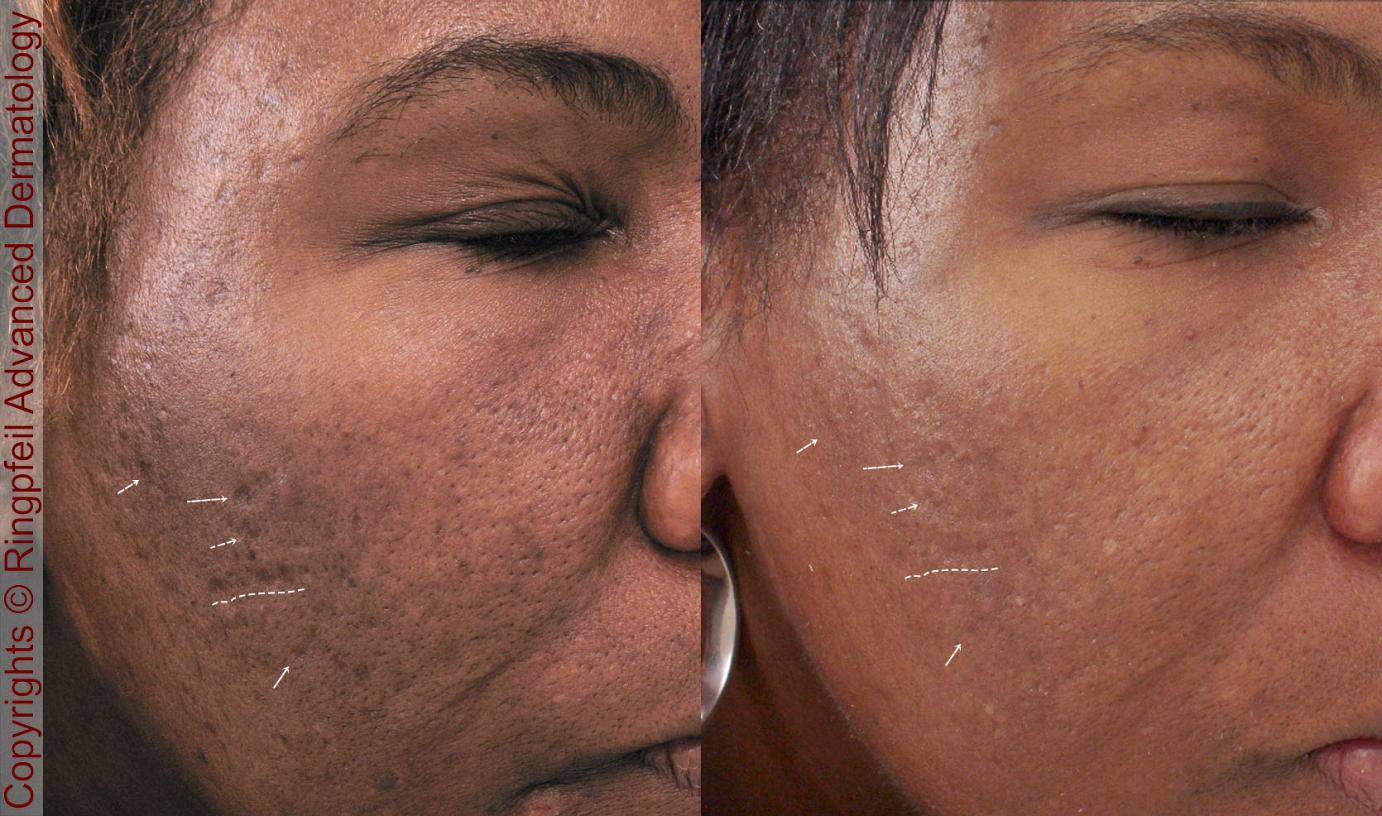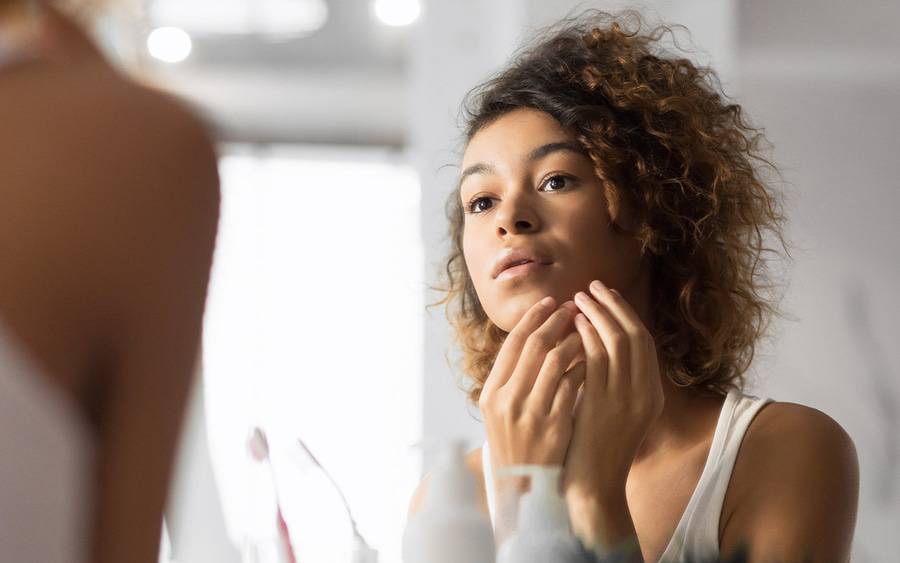Leading Acne Treatment for Sensitive Skin: Gentle Solutions for Clear Skin
Leading Acne Treatment for Sensitive Skin: Gentle Solutions for Clear Skin
Blog Article
Comprehending the Numerous Skin Disease and Effective Therapy Options for Acne Scars
Acne scars stand for a complex interaction of skin conditions that considerably effect people' self-confidence and total skin health and wellness. As we explore the landscape of acne scar monitoring, it comes to be apparent that the trip towards more clear skin might involve more than just topical solutions.
Sorts Of Acne Scars

On the other hand, hypertrophic marks result from an overproduction of collagen throughout the recovery procedure, resulting in elevated areas on the skin. These scars are often solid and can vary in shade, often showing up red or darker than the bordering skin.
Comprehending these kinds of acne marks is important for developing an effective treatment plan - skin rejuvenation treatments. Options might include chemical peels, laser therapy, microneedling, or facial fillers, tailored to the particular mark type. A comprehensive assessment with a skin doctor can aid identify the most suitable intervention, thinking about the individual's skin type, scar extent, and general skin wellness
Reasons For Acne Scarring
Scarring takes place as an outcome of the body's all-natural healing response to inflammation and injury created by acne lesions. When acne kinds, it causes an inflammatory action, resulting in the launch of various cytokines and growth variables that advertise recovery. This procedure can sometimes lead to too much tissue formation or poor repair work, resulting in marks.
The key reasons for acne scarring include the seriousness of the acne itself, period of the lesions, and individual skin kinds. Extreme inflammatory acne, such as blemishes and cysts, is more probable to lead to scarring because of much deeper tissue damages. In addition, inappropriate handling of acne lesions, such as pressing or selecting, can worsen tissue injury and inflammation, increasing the probability of scarring.
Hereditary predisposition also plays a substantial duty; people with a family members background of scarring are at a higher risk. In addition, skin type and shade can influence scar development, as darker complexion may experience post-inflammatory hyperpigmentation, while lighter skin may establish atrophic marks.
Ultimately, comprehending these causes is essential in managing acne and mitigating the potential for scarring.

Therapy Choices for Scarring
Reliable therapy alternatives for acne scarring differ depending upon the kind and severity of the scars. Usually categorized into atrophic, hypertrophic, and keloid marks, these problems require customized techniques for optimal results.
For atrophic marks, which are defined by a loss of cells, therapies such as chemical peels, microdermabrasion, and laser therapy are frequently employed. These approaches advertise skin revival and stimulate collagen production, thereby enhancing skin structure. Subcision, a minimally intrusive treatment, can likewise be efficient by breaking up fibrous bands underneath the skin.
Hypertrophic and keloid marks can be more challenging to deal with. Alternatives consist of corticosteroid injections to lower inflammation and squash the scars. In many cases, cryotherapy or laser treatment may be recommended to decrease their look.
Surgical choices are readily available for extreme scarring, where excision or skin grafting may be necessary. It's necessary for people to speak with a skin specialist to evaluate their details scar kind and go over one of the most suitable therapy plan. Combining several therapies usually produces the most effective results, guaranteeing that each patient's unique skin condition is attended to efficiently.
Natural Home Remedy and All-natural Solutions
All-natural remedies and home treatments can give an available technique for individuals looking for to enhance the appearance of acne scars (skin rejuvenation treatments). Various ingredients found in the home kitchen area have shown possible advantages in improving skin appearance and promoting healing

An additional reliable option is lemon juice, which serves as a natural exfoliant and can lighten hyperpigmentation. Nonetheless, it should be utilized carefully, as it might create photosensitivity. Oatmeal masks are likewise advantageous; their gentle exfoliation can help eliminate dead skin cells while comforting irritability.
Crucial oils, such as tea tree oil and lavender oil, can further support mark recovery because of their antimicrobial homes. It is essential to perform a spot test before applying any kind of treatment to make certain there are no adverse reactions. These natural services can be a complementary strategy in the trip to lessen acne marks.
Stopping Future Scarring
Embracing an aggressive strategy to skincare can dramatically minimize the risk of creating future acne marks. Routine cleaning, peeling, and hydration can aid maintain skin health and wellness and protect against stopped up pores.
Additionally, staying clear of the temptation to choose or squeeze acne sores is critical, as this can bring about swelling and succeeding scarring. Instead, people need to concentrate on using topical therapies that advertise recovery and decrease swelling. Active ingredients such as salicylic acid, benzoyl peroxide, and retinoids are known for their effectiveness in handling acne and minimizing scars.
Sunlight defense is an additional vital element; exposure to UV rays can hamper and darken scars healing. Consequently, using a broad-spectrum sunscreen daily can reduce these impacts - acne scars treatment.
Lastly, keeping a healthy diet abundant in anti-oxidants and staying hydrated assistances skin regrowth. By carrying out these safety nets, people can substantially lower their danger of future scarring and promote general skin wellness.
Conclusion
In final thought, a comprehensive understanding of acne scars, incorporating both atrophic and hypertrophic types, is necessary for effective treatment approaches. Appointment with a skin doctor stays crucial to design personalized approaches that think about private skin kinds and mark severity, ultimately enhancing the efficiency of scar monitoring techniques.
Acne marks stand for a complex interaction of skin conditions that substantially influence individuals' self-esteem and overall skin health. The 2 key categories of acne marks are atrophic and hypertrophic marks. These scars are further categorized right into 3 subtypes: ice pick marks, which are deep and narrow; boxcar marks, which are larger and have distinct sides; and rolling marks, which create a wave-like appearance due to unequal skin texture.
A comprehensive examination with a skin specialist can assist figure out the most suitable treatment, taking right into account the person's skin type, scar intensity, and general skin wellness.
Consultation with a skin specialist continues to be essential to develop personalized approaches that take into consideration specific skin types and mark seriousness, ultimately boosting the efficiency acne treatment for sensitive skin of scar administration strategies.
Report this page